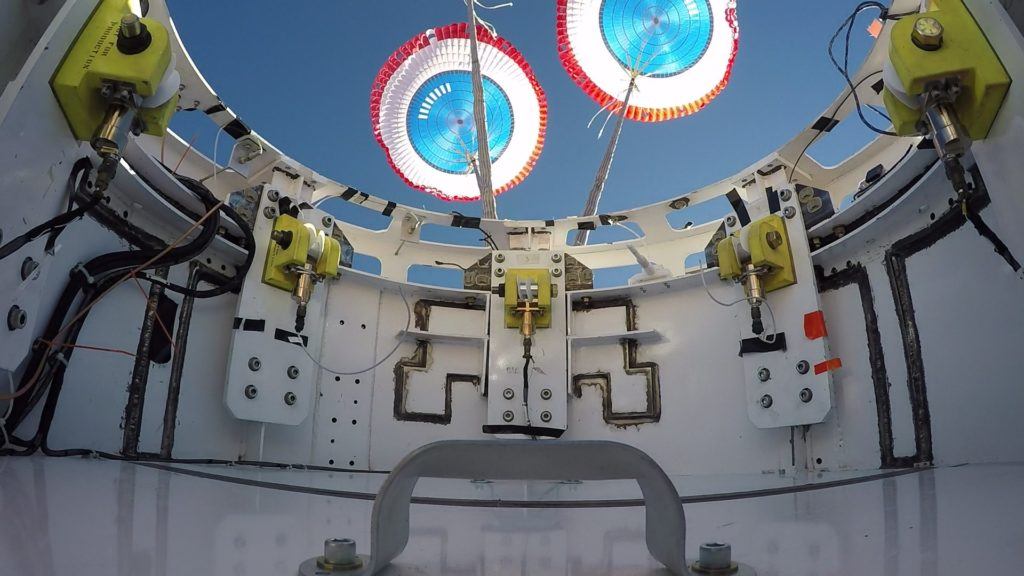Boeing’s CST-100 Starliner continues to progress through qualification testing on its way to first flight in 2018, having recently completed the first in a series of parachute drop tests.
Parachute testing goal: To certify that the parachute system and deployment sequence will in fact slow the capsule from 300 mph (the same speed it will experience on a return trip from space) to a safe ground landing velocity in a matter of minutes.
Watch the video:
When the Starliner re-enters Earth’s atmosphere after a mission to low-Earth orbit, a lot will happen to slow the capsule during the last few minutes of the Starliner’s re-entry and descent to Earth. First, the forward heat shield comes off, then two drogue parachutes deploy at about 28,000 feet to stabilize the spacecraft before three pilot parachutes deploy at about 12,000 feet. Next, three main parachutes, weighing 180 pounds each, reach full open at about 8,000 feet before the base heat shield jettisons and the landing airbags deploy. Neither the forward heat shield nor the airbag landing system were used in this first test.
